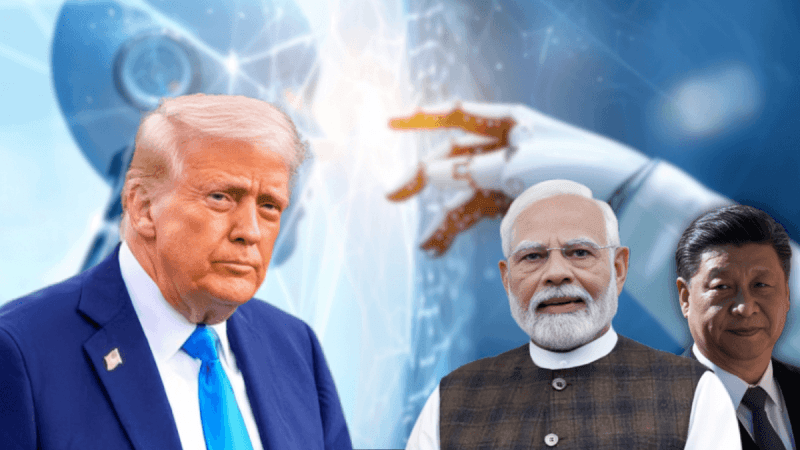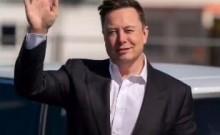
At the AI Summit in Washington on July 23, 2025, President Donald Trump delivered a forceful message to tech giants like Google and Microsoft: cease hiring overseas, particularly from countries like India, and prioritize American workers. Criticizing the industry's "globalist mindset," Trump declared, "Under President Trump, those days are over." This directive, rooted in his America First policy, signals a seismic shift in U.S. tech policy, intertwining economic nationalism with the race for artificial intelligence (AI) dominance. While Trump's vision aims to bolster domestic job creation and secure U.S. technological leadership, it raises profound questions about its feasibility, economic implications, and global ramifications. This op-ed dissects the policy's underpinnings, validates its context, relates it to broader developments, and deduces its likely implications for stakeholders offering a nuanced perspective on a polarizing move.
Trump's remarks at the AI Summit, hosted by the Hill and Valley Forum and the All-In Podcast, were part of a broader unveiling of his "AI Action Plan." The plan, comprising over 90 federal policy actions, emphasizes three pillars: accelerating innovation, building U.S.-centric AI infrastructure, and leading in international diplomacy and security. Key measures include deregulating AI development, streamlining data center permits, and exporting U.S.-made AI technologies to allies. Trump's call to curb overseas hiring aligns with his critique of tech firms for outsourcing jobs to countries like India and China while profiting from American markets. He specifically named Google and Microsoft, accusing them of building factories in China, hiring in India, and stashing profits in Ireland, framing these practices as unpatriotic.
This rhetoric is consistent with Trump's America First agenda, which prioritizes domestic manufacturing, job creation, and reducing reliance on foreign supply chains, particularly in critical sectors like semiconductors and AI hardware. Posts on X reflect public sentiment, with some users applauding the push for American jobs, while others highlight potential disruptions to global tech ecosystems. The White House's simultaneous signing of three executive orders targeting "woke" AI models, easing data center construction, and promoting AI exports underscores a holistic strategy to reshape the tech landscape.
Relation to Broader Developments
Trump's policy must be viewed within the context of global AI competition, particularly with China. The U.S. and China are locked in a technological arms race, with AI poised to transform economies, militaries, and societies. The Trump administration's plan contrasts with the Biden era's "high fence" approach, which restricted AI chip exports to China to curb its military advancements. Trump's reversal of these restrictions, allowing firms like Nvidia to resume sales to China, reflects a belief that economic openness can outpace competitors while bolstering U.S. firms.
Domestically, the policy dovetails with Trump's earlier successes in attracting tech investments. In Pittsburgh, just days before the AI Summit, Trump highlighted $92 billion in AI and energy investments in Pennsylvania, including Google's $3 billion hydropower deal and CoreWeave's $6 billion data center. These projects align with his vision of making the U.S. a hub for AI infrastructure, but they also raise environmental concerns due to data centers' massive energy and water consumption.
Globally, the call to curb overseas hiring resonates with rising economic nationalism in other nations. India, a key supplier of tech talent, faces potential strain in its $250 billion IT services industry, which relies heavily on U.S. clients. Meanwhile, tech giants face a talent shortage in the U.S., where the STEM workforce struggles to meet AI's demands.
Implications and Imperatives
1. U.S. Tech Industry:
Trump's directive could force tech giants to recalibrate their hiring strategies, potentially increasing costs. The U.S. tech sector relies on global talent, with Indian professionals comprising a significant portion of H-1B visa holders. A 2023 study by the National Foundation for American Policy estimated that 1.4 million foreign-born workers, many from India, fill critical STEM roles. Restricting this pipeline risks delaying AI projects and inflating wages, which could hamper competitiveness against Chinese firms like DeepSeek, which operate with lower costs. Tech firms may also face pressure to invest in U.S. training programs, but scaling these to meet demand will take years. However, increased domestic hiring could stimulate local economies and align with public calls for job prioritization.
2. Global Tech Ecosystem:
For India, Trump's policy threatens economic disruption. The Indian IT sector, employing over 5 million people, derives 60% of its revenue from U.S. clients. Reduced hiring could slow growth, impacting U.S.-India relations, especially as India seeks to become an AI and tech manufacturing hub. Indian firms like TCS and Infosys may need to diversify markets or establish U.S. operations, potentially offsetting job losses but raising costs. Other nations, like Canada and the EU, may seize the opportunity to attract displaced talent, reshaping global tech hubs.
3. Geopolitical Dynamics:
Trump's America First policy risks alienating allies while failing to deter China. By easing AI chip exports restrictions, the U.S. may inadvertently strengthen China's military AI capabilities, as feared by Biden-era officials. Conversely, the plan to export U.S. AI systems to allies could standardize American technology globally, countering influence. However, this requires diplomatic finesse to avoid perceptions of economic coercion. The policy's emphasis on deregulation also raises safety concerns about AI safety and bias, potentially eroding public trust and inviting international scrutiny.
4. Domestic Political Landscape:
Trump's focus on "woke AI" and DEI rollbacks taps into cultural conservative grievances, galvanizing his base but alienating tech's progressive workforce. Critics, including privacy advocates and labor unions, argue that deregulation prioritizes corporate interests over AI safety and worker protections. The threat to withhold federal funding from states with "burdensome" AI regulations could spark legal challenges, particularly in California, where AI safety laws are advancing.
Trump's policy is a double-edged sword. It capitalizes on nationalist sentiment and leverages U.S. economic might to drive AI leadership, but it overlooks structural challenges like talent shortages and environmental trade-offs. Forcing tech giants to prioritize American hiring may yield short-term gains but risks long-term competitiveness if global collaboration falters. The deregulation push could accelerate innovation but invites risks of monopolization and ethical lapses. Geopolitically, the strategy may embolden rivals if not paired with robust national security safeguards.
Implications for India
President Trump's directive at the AI Summit on July 23, 2025, to curb overseas hiring by U.S. tech giants like Microsoft and Google poses significant challenges for India's $250 billion IT services industry, which employs over 5 million people and derives 60% of its revenue from U.S. clients. Indian firms such as TCS, Infosys, and Wipro, which rely heavily on H-1B visa holders and offshore talent to serve American markets, face potential revenue slowdowns and job losses if U.S. companies shift to domestic hiring. This policy could strain U.S.-India economic ties, especially as India aims to position itself as a global AI and semiconductor hub, with initiatives like the $10 billion India Semiconductor Mission. Beyond economics, reduced access to U.S. tech jobs may dampen India's aspirations to lead in AI innovation, as its talent pool loses exposure to cutting-edge projects. However, this could also spur India to diversify its tech markets, targeting Europe, Southeast Asia, and the Middle East, while accelerating domestic AI development to reduce reliance on U.S. demand.
Imperatives and Pragmatic Solutions
India must respond with strategic agility to mitigate the fallout and seize emerging opportunities. First, Indian IT firms should invest in U.S.-based operations to localize hiring, leveraging their existing American offices to align with Trump's policy while maintaining client relationships. Second, the government and industry must double down on upskilling programs, such as the Skill India Mission, to equip workers for AI-driven roles in domestic and alternative global markets. Collaborations with universities and global tech players can bridge the talent gap, ensuring India remains a competitive AI hub. Third, India should diversify its tech exports by strengthening ties with allies like the EU, Japan, and ASEAN nations, which are expanding their digital economies. Finally, accelerating public-private partnerships in AI and semiconductor manufacturing can position India as a self-reliant tech powerhouse, reducing vulnerability to U.S. policy shifts. By blending localization, skill development, and market diversification, India can navigate this challenge while advancing its global tech stature.
Nationalism with Pragmatism
President Trump's call to end overseas tech hiring at the AI Summit reflects a bold bid to align AI development with America First principles. While it promises of job creation and U.S. dominance resonate with many, the policy's success hinges on balancing nationalism with pragmatism. Tech giants must navigate a fraught landscape of compliance and innovation, while the U.S. must invest in education and infrastructure to sustain its edge. Globally, allies like India face economic recalibration, and rivals like China may exploit any missteps. For all stakeholders, the imperative is clear: adapt swiftly or risk obsolescence in the AI race that will define the 21st century.
[Major General Dr Dilawar Singh is an Indian Army veteran who has led the Indian Army's Financial Management, training and research divisions introducing numerous initiatives therein. He is the Senior Vice President of the Global Economist Forum AO ECOSOC, United Nations and The Co President of the Global Development Bank.]









